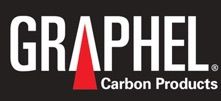Sinker EDM – The Spark Gap Thermoelectric Model

EDM machining is considered by most to be a thermal removal process. The most convincing support for this claim is the removal of material from the electrodes by melting and/or vaporization by a thermal process, along with pressure dynamics established in the spark-gap. The spark gap generates an electrical force on the surface of the electrode that removes material.
Electric discharge machining (EDM), sometimes referred to as spark machining, spark eroding, burning, die sinking or wire erosion is a manufacturing process whereby a desired shape is obtained using electrical discharges (sparks). Material is removed from the workpiece by a series of rapidly recurring current discharges between two electrodes, separated by a dielectric liquid and subject to an electric voltage. One of the electrodes is called the tool-electrode, or simply the ‘tool’ or ‘electrode’, while the other is called the workpiece-electrode, or ‘workpiece’.
Electrode gap (spark gap) is the distance between the electrode and the part during the process of EDM. Electro-mechanical or hydraulic systems are used to respond to average gap voltage. To obtain good performance and gap stability a suitable gap should be maintained.
The EDM process is based on the thermoelectric energy. This energy is created between a workpiece and an electrode submerged in a dielectric fluid with the passage of electric current. The workpiece and the electrode are separated by a specific small gap called spark gap. Pulsed arc discharges occur in this gap filled with an insulating medium, preferably a dielectric liquid like hydrocarbon oil or de-ionized (de-mineralized) water. In this process there is no direct contact between the electrode and the workpiece thus eliminating mechanical stresses, chatter and vibration problems during machining.
As an electrode moves toward the workpiece the spark gap is reduced so that the applied voltage is high enough to ionize the dielectric fluid. Short duration discharges are generated in a liquid dielectric gap, which separates electrode and workpiece. The material is removed from tool and workpiece with the erosive effect of the electrical discharges. The dielectric fluid serves the purpose to concentrate the discharge energy into a channel of very small cross sectional areas. It also cools the two electrodes, and flushes away the products of machining from the gap.
Engineering materials having higher thermal conductivity and melting points are used as a tool material for EDM process of machining. Copper, graphite, copper-tungsten, silver-tungsten, copper graphite and brass are used as a tool material (electrode) in EDM. They all have good wear characteristics, better conductivity, and better sparking conditions for machining. Tungsten resists wear better than copper. The factors that affect selection of electrode material include metal removal rate, wear resistance, desired surface finish, cost of electrode material manufacture and material and characteristics of work material to be machined.
